Chapter 38. University of British Columbia: Irving K. Barber Learning Centre
What Is It?
The Irving "Ike" K. Barber Learning Centre is the newest addition to the University of British Columbia Library system. Located at UBC's Vancouver campus, the Learning Centre provides access to library facilities, learning resources, services, and innovative teaching spaces. Among the services the Learning Centre provides are:
- Access to print and digital research collections
- Study, meeting, and social spaces
- Access to programs that promote knowledge and innovation for students, faculty, staff, and the general public
- Space for future growth and preservation of collections in an environmentally controlled environment
The Learning Centre is not only a focal point of education for students and faculty at UBC but also supports lifelong learning by people throughout British Columbia by providing virtual access to the rich collections and resources of the library and university, using technology to connect British Columbia's geographically diverse population.
The Irving K. Barber Learning Centre was designed to provide a variety of learning and study spaces that support new approaches to accessing print and digital resources. The physical facility is a blend of 40,000 square feet of refurbished space and 200,000 square feet of new construction. (See Figure 1.) A 3D walkthrough of the Learning Centre is available at <http://www.ikebarberlearningcentre.ubc.ca/view1.html>.
Figure 1. Ike Barber Learning Centre
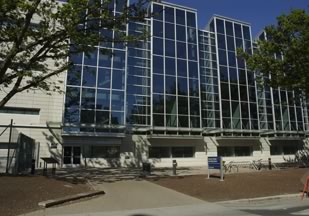
UBC is a public research institution located in Vancouver, British Columbia, that serves 30,000 undergraduates and 20,000 graduate students. UBC has a long history of excellence in teaching and is continually experimenting with new teaching methodologies and technologies.
What Happens Here?
The Learning Centre includes a lecture hall, classrooms, and seminar rooms designed to encourage and support innovative teaching and learning activities. A variety of unique spaces provides venues for events such as lectures, concerts, and symposia. Videoconferencing capabilities allow users to connect with others around the globe, including those at UBC's other campuses, such as UBC Okanagan. Web-based and on-site displays and exhibitions make rare books and special materials available to visitors.
A café and informal seating areas encourage students and others to use the Learning Centre as a place for informal gatherings and small group work, as well as a place to study in a relaxed atmosphere. (See Figures 2 and 3.) More formal study spaces are also available. (See Figures 4 and 5.)
Figure 2. Comfortable, Portable Furniture
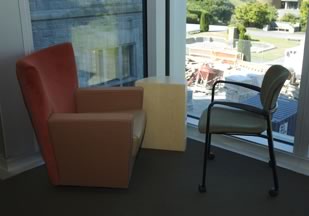
Figure 3. Rolling Furniture for Easy Reconfiguration
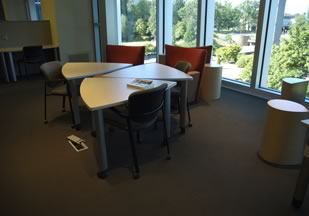
Figure 4. Study Room
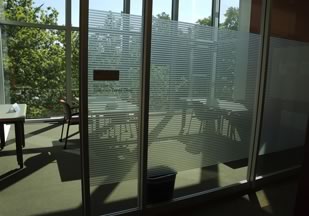
Figure 5. Study Nook
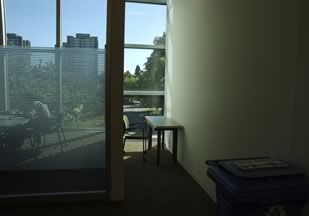
The heart of the Learning Centre's facility is the Chapman Learning Commons, a space that combines academic resources, technology, and expert assistance within a space that offers seating for individual and group study. The learning commons is also home to various special-purpose rooms, including the Dodson Room, where events such as concerts and lectures are hosted.
A multimedia room provides innovative space in the Learning Centre that allows students, faculty, and staff to work on multimedia projects, develop presentations, and collaborate on group projects that require shared technologies.
How Is Technology Used?
The entire facility is supported with wireless high-speed Internet access. In addition, videoconferencing capabilities allow users to connect with others around the globe using H.323.
The Learning Centre is home to a number of digitization projects with a focus on British Columbia history. These projects help showcase the wealth of historical materials in the UBC Library collection and allow people from around the province and beyond to learn more about British Columbia's rich history. The Learning Centre's Webcast program provides free online access to events such as lectures, seminars, and concerts, all of which are archived on the Learning Centre's Web site. The Learning Centre is also working with a number of professional groups to provide online information services to members located throughout the province.
The automated storage and retrieval system (ASRS) provides high-density, climate-controlled storage for up to 1.8 million items from the UBC Library and other BC library collections. The first of its kind in Canada, the ASRS uses industrial technology to store and retrieve rare and low-use materials. The robotic cranes store and retrieve items in the ASRS and respond to user requests for materials initiated through the library's online catalogue.
What Makes the Space Successful?
To create traditional quiet study spaces, flexible learning spaces, and storage for an extensive collection, the university adopted an open model with flexible and modular furnishings. These furnishings are playful yet at the same time help to create a new space that also honors the tradition of previous spaces such as the Ridington Reading Room, named after the first university librarian. (See Figure 6.) Lessons learned from the learning commons housed in the previous main library building greatly influenced the design process of the Learning Centre, especially with the goals of blending technology with learning resources and staff assistance.
Figure 6. The Ridington Reading Room
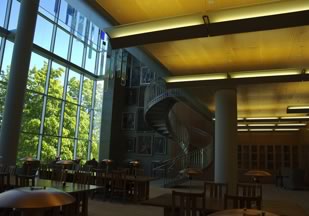
The existing patrons and staff were consulted extensively to help create the design principles. Those most familiar with the library and its activities were surveyed to identify the needs in the existing commons and library. Student workers identified common problems of the existing space and offered suggestions on how to resolve them, such as areas to support collaborative study, quiet, and semi-quiet activities.
The space can be considered successful in that it appears to satisfy the needs and desires of the previous space inhabitants. The space supports transparency and easy movement between different areas of the Learning Centre. Ongoing focus groups are being conducted to determine how to meet the needs of the extended community that will use the space in the future.
What Principles Were Behind the Design?
The architects and design committee decided that the Learning Centre should provide a level of transparency to permit those outside the building to observe what goes on inside the library. Inside, the study spaces were conceived to support many different types of quiet, semi-quiet, individual, and small group interactions. Access to resources including the Internet and library collections was designed to be as seamless as possible. Multiple modes of activity as well as the rapid and unobtrusive transition from one functional area to another were primary requirements. The Learning Centre achieves this balance of different requirements by introducing transition zones where patrons can quickly and easily move from one region to another. (See Figure 7.)
Figure 7. Transition Zone
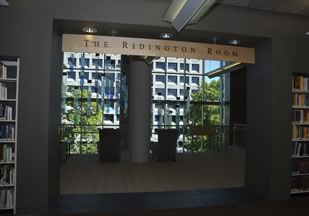
To properly fulfill its role within the community, the Learning Centre must serve a diverse set of constituents whose needs may change depending on the task. The ability to act as a meeting place, study space, or social place required a high degree of flexibility. Different zones within the Learning Centre were set up as flexible or less flexible spaces to encourage movement to the space appropriate for the desired activity. (See the floor plans [http://www.ikebarberlearningcentre.ubc.ca/images/concourse.jpg].)
What Is Unique or Noteworthy?
The designers of this space went to great lengths to reconcile traditional library spaces and the activities supported with the changing nature of modern collections and information services. (See Figure 8.) Great effort went into encouraging and collecting the input from existing, past, and potential users. Rethinking the library and the research services offered in the face of the increasing importance of digital resources was important. The design committee had the difficult task of merging the feedback collected in informal evaluations and comments from those that used the space with new requirements.
Figure 8. The Ridington Reading Room
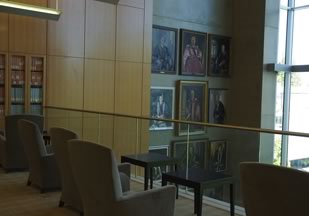
The space embodies several of the goals of the university, including an ongoing commitment to research and student exposure to primary research, including offering students the best resources available. The importance of multidisciplinary studies is emphasized through the prominence of multiple transition zones built throughout the library and the inclusion of a diverse set of academic programs including Arts One, Science One, and the School of Library, Archival, and Information Studies. Also, the Fine Arts and Science and Engineering Libraries have collections and service points in the building.
About the Authors
Simon Neame is coordinator of programs and services for the Irving K. Barber Learning Centre at the University of British Columbia.
Cyprien Lomas is an ELI scholar in residence and director of the Learning Centre in the Faculty of Land and Food Systems at the University of British Columbia.